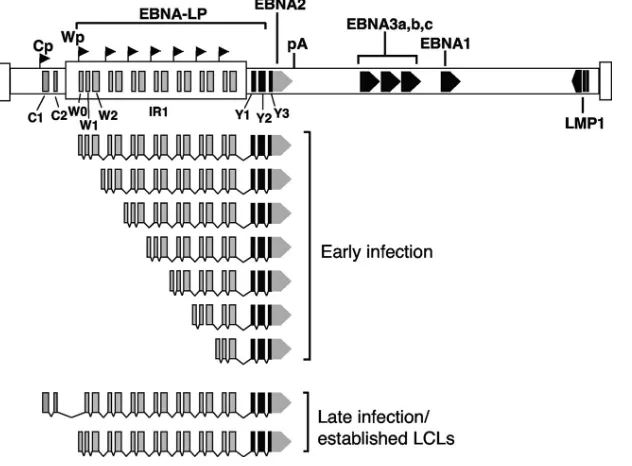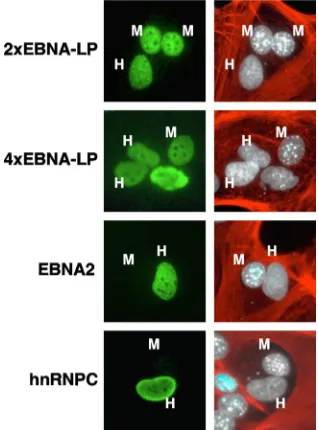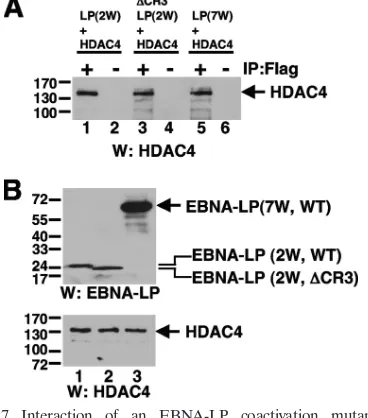Nuclear-Cytoplasmic Shuttling Is Not Required for the Epstein-Barr Virus EBNA-LP Transcriptional Coactivation Function
Full text
Figure




Related documents
Character- ization of protein-DNA complex formation with this region indicates that it contains binding sites for three series of com- plexes of PC12 cell nuclear proteins, that
The vacuoles containing virions fused with the outer plasma membrane and the particles appeared on the surface of the infected cell.. Late in infection, enveloped virions were
As indicated above, this amino acid substitution did not reduce the ability of the virus to grow in either MDBK cells or CEF but it did change the receptor-binding properties so
A. Specificity of HCMV binding to the 34- and 32-kDa receptor proteins. Cold competition analyses were performed to demonstrate the specificity of binding of HCMV to the 34- and
By using monospecific anti-nsP3 antibodies in combina- tion with immunofluorescence microscopy, we showed re- cently that SFV-specific nonstructural protein nsP3 is local- ized to
Transcripts from the 5' SNV LTR were not detected in intact recombinant SNV proviruses selected for an internal promoter. Since the ability of SNV neo-containing viruses to
whereas nude rats were highly resistant to tumor challenge with Ad2-transformed hamster cell lines (either no tumors were observed, or small tumor nodules appeared and then
A late-region replacement SV40 vector containing the influenza A HA gene cloned at the HpaII site (5) was digested with KpnI and Sail to remove the coding region for the HA
